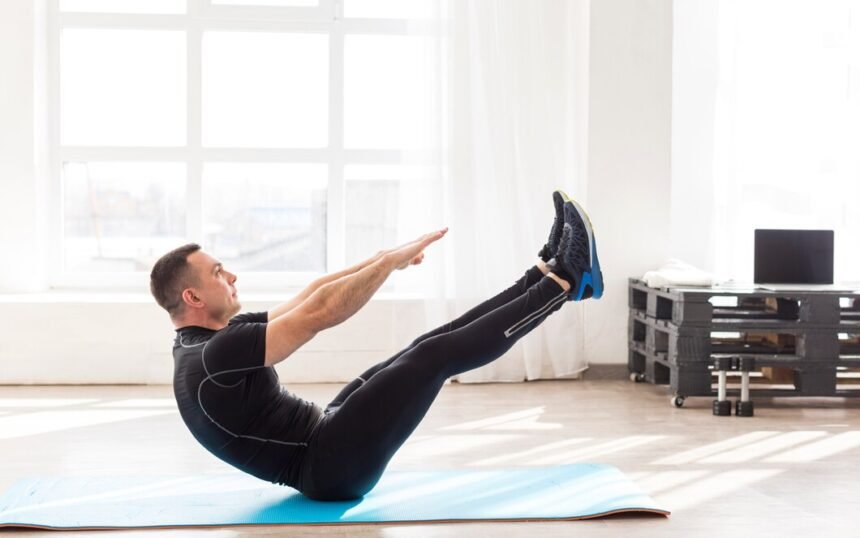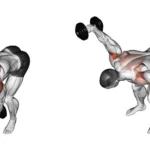V-Ups (Jackknife): Exercise Overview
The V-Up, also known as the Jackknife, is a dynamic core exercise that primarily targets the rectus abdominis and obliques, with secondary engagement of the hip flexors and lower back. This compound movement involves simultaneously lifting the upper body and legs to form a “V” shape, making it an effective way to build core strength, stability, and endurance.
Ideal for enhancing abdominal definition and functional core strength, the V-Up is a versatile addition to core-focused workouts, ab routines, or full-body training programs. It’s suitable for lifters and fitness enthusiasts of varying levels, though beginners may need to modify the movement to build sufficient core strength (Schoenfeld, 2010).
How to Perform the V-Ups (Jackknife)
- Lie flat on your back on a mat with your legs extended and arms stretched overhead, palms facing up—this is your starting position.
- Engage your core and simultaneously lift your upper body and legs, reaching your hands toward your feet to form a “V” shape with your body.
- At the top of the movement, balance briefly on your hips, keeping your legs and arms as straight as possible while contracting your abs.
- Slowly lower your body back to the starting position with control, maintaining tension in your core and avoiding letting your feet or shoulders touch the ground.
- Repeat for the desired number of repetitions.
Modification: Beginners can bend their knees slightly or perform half V-Ups (lifting only the upper body or legs) to reduce intensity while building strength.
Tips for Optimal Performance
- Control the Movement: Perform the lift and descent slowly to maximize core engagement and avoid using momentum, which reduces effectiveness and increases injury risk (McGill, 2010).
- Engage Your Core: Brace your abs throughout the exercise to stabilize your spine and protect your lower back from strain (Wirth et al., 2016).
- Keep Limbs Straight: Aim to keep your legs and arms extended for maximum range of motion, but slightly bend your knees if flexibility or strength is limited (Schoenfeld, 2016).
- Avoid Neck Strain: Lift with your core, not your neck, and keep your head in a neutral position to prevent pulling or discomfort.
- Breathe Properly: Exhale as you lift into the “V” position and inhale as you lower back down to support core stability and muscle oxygenation.
- Progress Gradually: Start with lower reps (e.g., 8–12) and increase volume or intensity as your core strength improves to maintain proper form.
Forging a strong core with V-ups? Discover their role in our Ultimate Guide to Muscle Groups for abs training.








